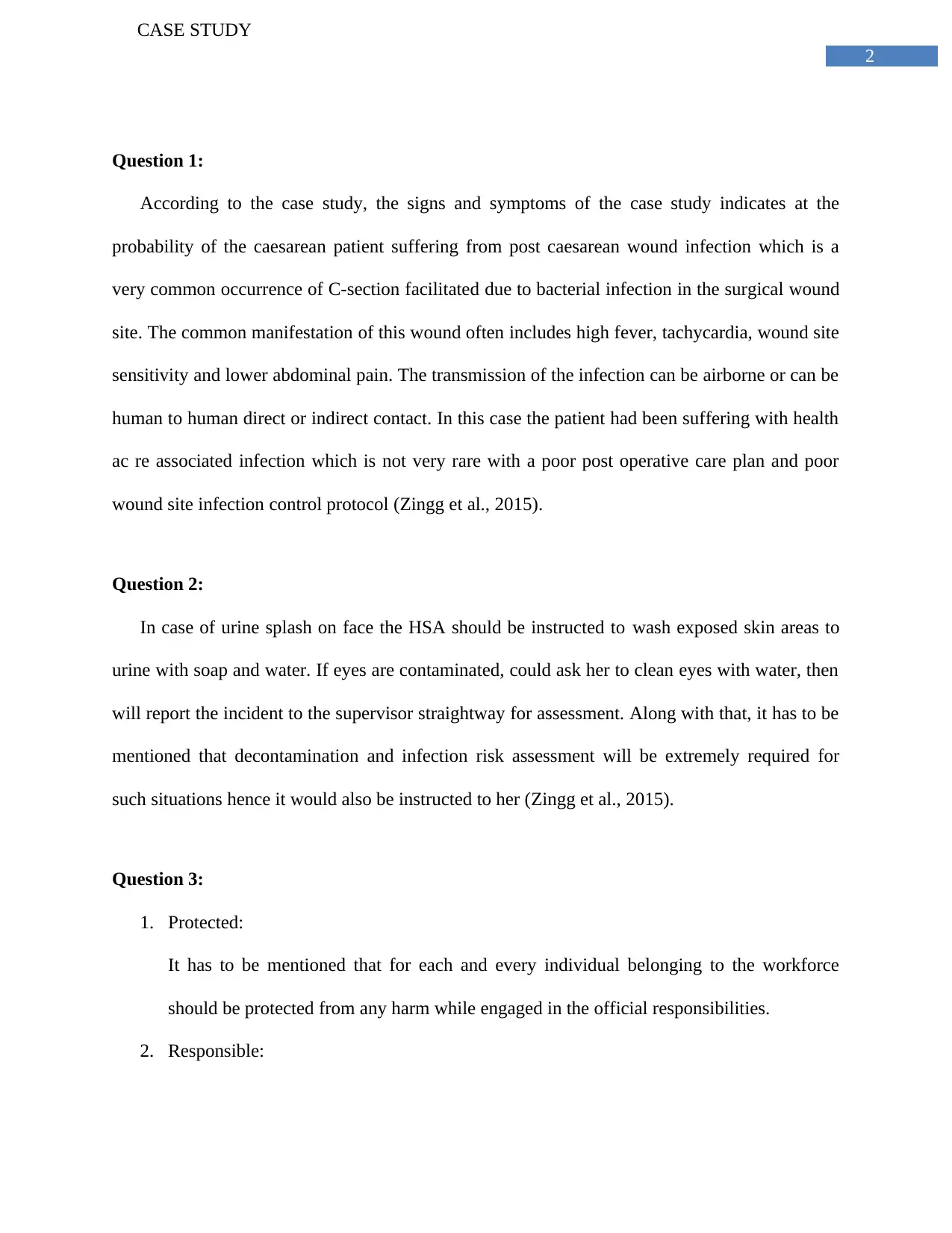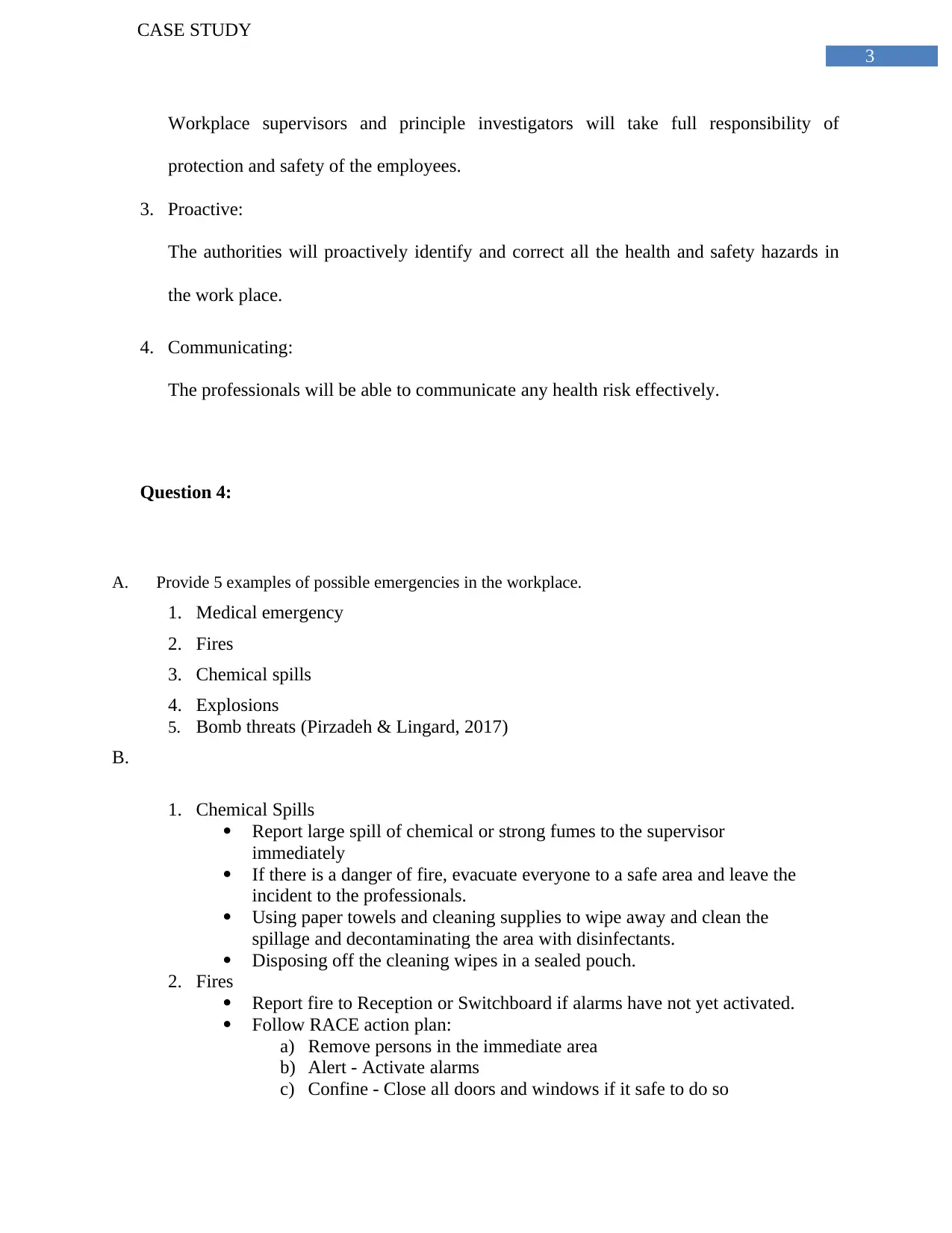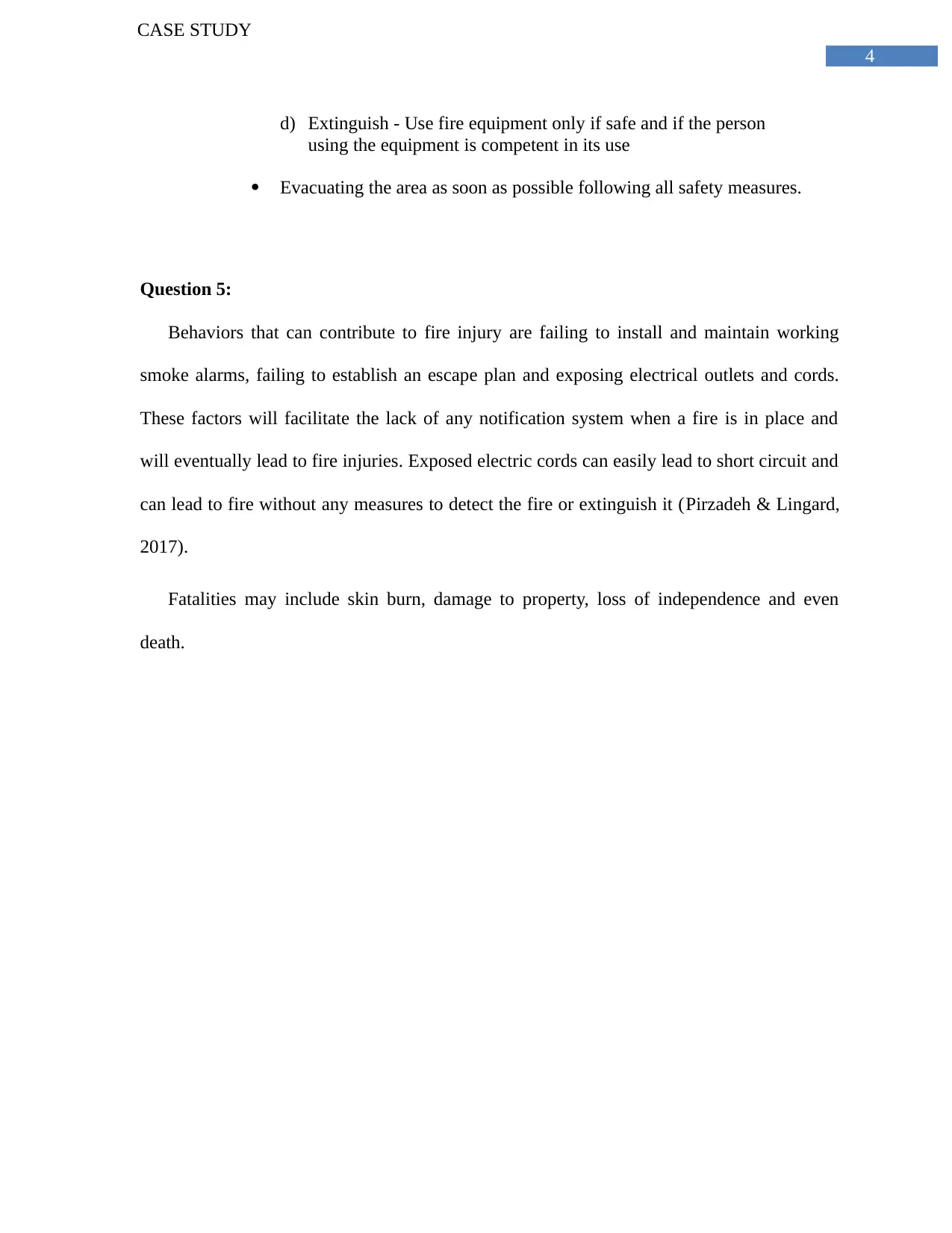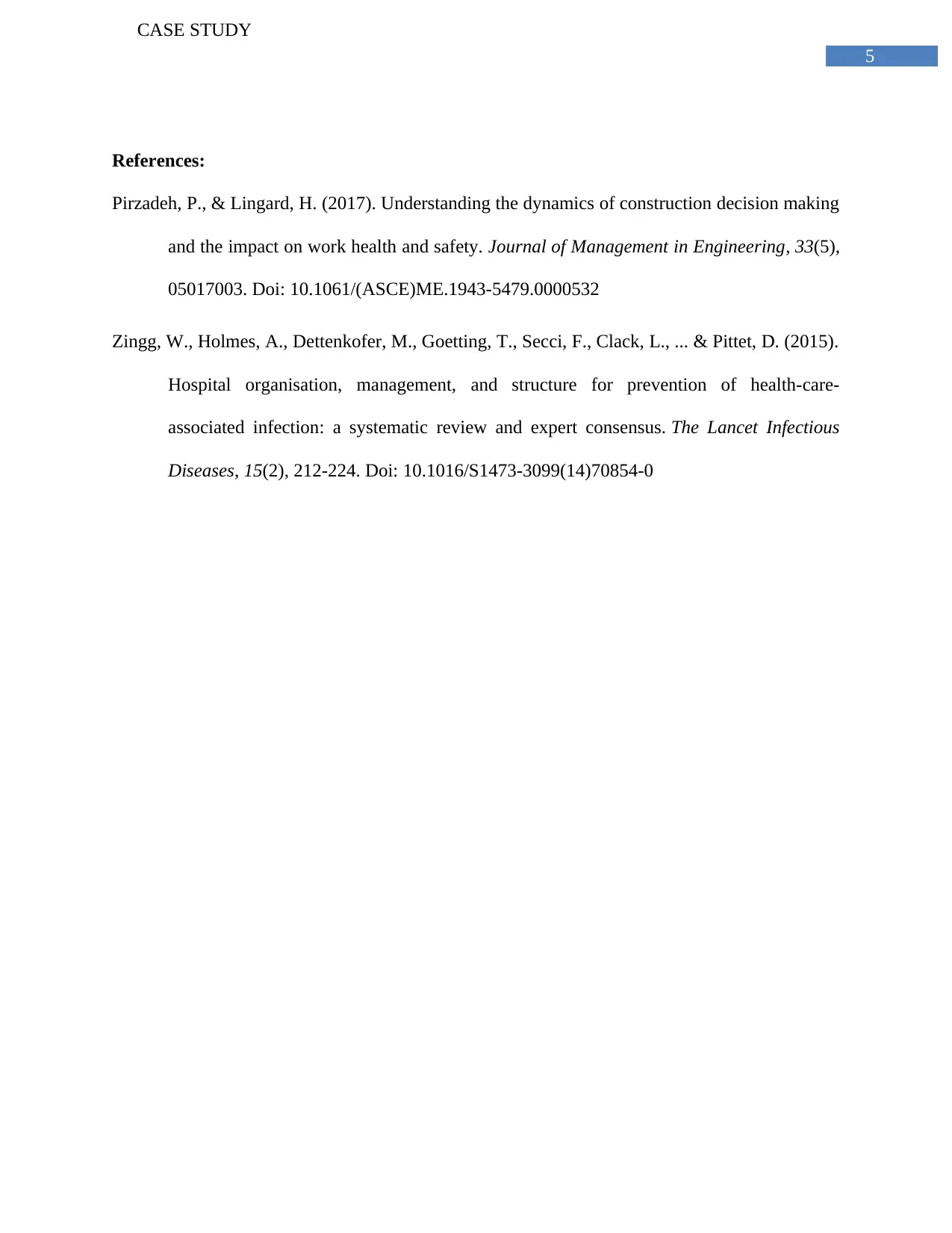Case Study on Post Caesarean Wound Infection: Symptoms and Responses
VerifiedAdded on 2021/04/24
|6
|730
|80
Case Study
AI Summary
This case study analyzes a post caesarean wound infection, addressing symptoms, causes, and potential complications. It explores the implications of health care associated infections, emphasizing the importance of post-operative care and infection control. The study includes instructions for handling workplace incidents, such as urine exposure, and outlines emergency protocols for various scenarios, including fires, chemical spills, and bomb threats. It emphasizes the need for proactive health and safety measures, including communication and employee protection. Furthermore, the assignment highlights behaviors that contribute to fire injuries and the importance of fire safety measures. The case study references relevant research to support its findings and recommendations, providing a comprehensive overview of infection control and workplace safety within a healthcare setting.
1 out of 6







![[object Object]](/_next/static/media/star-bottom.7253800d.svg)